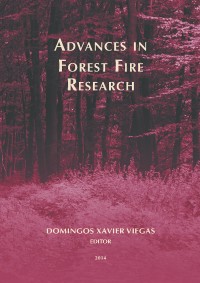Please use this identifier to cite or link to this item:
https://hdl.handle.net/10316.2/34294| DC Field | Value | Language |
|---|---|---|
| dc.contributor.author | Pacheco, Abílio Pereira | |
| dc.contributor.author | Claro, João | |
| dc.contributor.author | Oliveira, Tiago | |
| dc.date.accessioned | 2014-10-24T09:36:17Z | |
| dc.date.accessioned | 2020-09-09T21:31:16Z | - |
| dc.date.available | 2014-10-24T09:36:17Z | |
| dc.date.available | 2020-09-09T21:31:16Z | - |
| dc.date.issued | 2014 | - |
| dc.identifier.isbn | 978-989-26-0884-6 | |
| dc.identifier.uri | https://hdl.handle.net/10316.2/34294 | - |
| dc.description.abstract | Rekindles and false alarms are phenomena that have a significant presence in the Portuguese forest fire management system and an important impact on suppression resources in particular and fire management resources in general. As illustration, in 32,357 incidents that the suppression system handled in 2010, 12.3% were false alarms and 13.0% were rekindles, rising to 12.5% and 15% respectively, during the summer, the critical period. In this work, we propose a discrete-event simulation model of a forest fire suppression system designed to analyze the joint impact of primary fires (ignitions), and non-value-added fire suppression activities such as rekindles (defects, inappropriate processing) and false alarms (motion) on the performance of the system. The work contributes to address a research gap concerning that impact, and features a novel application of simulation to suppression systems, as a screening tool to support more holistic analyses. The model was implemented in ®ARENA and is applied to a case study of the district of Porto, Portugal, for the critical period of the forest fire season, between July and September 2010. We study the behavior of the system’s point of collapse, comparing the real base scenario with a benchmark scenario built with reference values for rekindles and false alarms, and also as a function of the number of fire incidents, considering historical variations. The results of the analysis are useful for operational decision-making and provide relevant information on the trade-off between prevention and suppression efforts. In particular, we have found that reducing false alarms and rekindles to benchmark values would significantly reduce pressure on firefighting teams, enabling more effective suppression operations. | eng |
| dc.language.iso | eng | - |
| dc.publisher | Imprensa da Universidade de Coimbra | por |
| dc.relation.ispartof | http://hdl.handle.net/10316.2/34013 | por |
| dc.rights | open access | - |
| dc.subject | Wildland fire suppression | eng |
| dc.subject | Rekindles | eng |
| dc.subject | False alarms | eng |
| dc.subject | Discrete event simulation | eng |
| dc.subject | Hoax calls | eng |
| dc.subject | Wildfire | eng |
| dc.title | Waste in non-value-added suppression activities: simulation analysis of the impact of rekindles and false alarms on the forest fire suppression system | por |
| dc.type | bookPart | por |
| uc.publication.firstPage | 1030 | - |
| uc.publication.lastPage | 1034 | - |
| uc.publication.location | Coimbra | por |
| dc.identifier.doi | 10.14195/978-989-26-0884-6_112 | - |
| uc.publication.section | Chapter 3 - Fire Management | por |
| uc.publication.digCollection | PB | por |
| uc.publication.orderno | 112 | - |
| uc.publication.area | Ciências da Engenharia e Tecnologias | por |
| uc.publication.bookTitle | Advances in forest fire research | - |
| uc.publication.manifest | https://dl.uc.pt/json/iiif/10316.2/34294/211347/manifest?manifest=/json/iiif/10316.2/34294/211347/manifest | - |
| uc.publication.thumbnail | https://dl.uc.pt/retrieve/11172572 | - |
| uc.publication.parentItemId | 53868 | - |
| uc.itemId | 70276 | - |
| item.grantfulltext | open | - |
| item.fulltext | With Fulltext | - |
| Appears in Collections: | Advances in forest fire research | |
Files in This Item:
| File | Description | Size | Format | |
|---|---|---|---|---|
| 978-989-26-0884-6_112.pdf | 1.46 MB | Adobe PDF |  |
Items in DSpace are protected by copyright, with all rights reserved, unless otherwise indicated.
